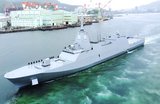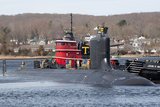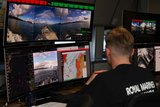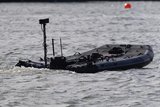Raytheon-made SM-3 missile finds ballistic target
The US Navy has conducted a Missile Defense Agency test that saw two Standard Missile-3 Block IBs consecutively launched from the USS Lake Erie against a complex, separating short-range ballistic missile target.
According to Raytheon, the first guided missile successfully destroyed the target using the sheer kinetic force of a massive collision in space.
The second SM-3 was designed to test the ship weapons system's ability to launch multiple missiles at one time against a threat. An intercept for the second SM-3 was not part of the test scenario.
Taylor Lawrence, president, Raytheon Missile Systems, said: ‘Confidence in the SM-3 Block IB's defensive capability continues to grow with each flight test. When this weapon deploys in 2015, the US and our allies will have a tremendously reliable, capable defensive asset on their side.’
Mitch Stevison, Raytheon Missile Systems' SM-3 program director, added: ‘We're gaining a tremendous amount of information about what this missile can do, and in many instances it is far surpassing design requirements. The SM-3 Block IB is proving it can take on increasingly sophisticated scenarios, and that kind of confidence sets the stage for a production decision.’
The SM-3 is a defensive weapon used by the US and Japan to defend against short- to intermediate-range ballistic missiles.
Based on the SM-3 Block IA, the SM-3 Block IB incorporates an enhanced two-colour infrared seeker and the Throttleable Divert and Attitude Control System, a mechanism that propels the missile toward incoming targets.
More than 155 SM-3s have been delivered to the US and Japanese navies, and Raytheon is on track to deliver the next-generation SM-3 Block IB in 2015. SM-3 Block IB will be deployed in both sea-based and land-based modes.
More from Naval Warfare
-
![UK to join US Navy’s Virginia-class submarine assembly effort to speed up construction]()
UK to join US Navy’s Virginia-class submarine assembly effort to speed up construction
The expansion of the Virginia-class submarine construction to UK shores could accelerate the project as US shipbuilders continue to fall short of delivery goals.
-
![US Navy seeks new sensors for the CH-53K King Stallion heavy-lift helicopter]()
US Navy seeks new sensors for the CH-53K King Stallion heavy-lift helicopter
The US Navy intends to publish a draft request for proposals in Q2 2026 and conduct an open competition for the supply of new electro-optical and infrared capabilities for the CH-53K heavy-lift helicopter.
-
![What new technologies could be involved in UK Atlantic Bastion initiative?]()
What new technologies could be involved in UK Atlantic Bastion initiative?
As new details emerge on the UK Royal Navy’s plan to secure the North Atlantic for the UK and NATO, three main areas of opportunity for new technology are the focal point.
-
![NATO naval exercises map out future USV requirements but raise questions on acquisition]()
NATO naval exercises map out future USV requirements but raise questions on acquisition
Uncrewed surface vessels have shifted from a desirable capability to a critical one for navies. But should these systems be bought outright, rented as a service or rapidly built using commercial off-the-shelf components?






















